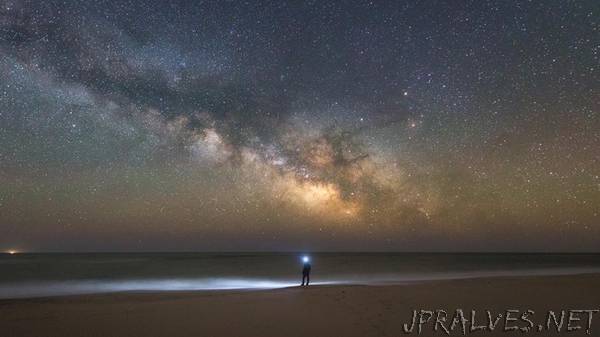
““We made a major discovery, which questions our understanding of the formation of the first generations of stars in the universe”. Researcher at EPFL Laboratory of astrophysics (LASTRO), Pascale Jablonka is a founding member of the Pristine survey, an international project dedicated to the search of the most ancient and metal-poor stars. It allowed the recent identification of an extremely rare object. Called Pristine 221, it is among the 10 most metal-poor stars known to date in the halo of our Galaxy. Moreover, it is one out of two outstanding stars that are almost totally carbon free. This breakthrough has recently been published in the journal Monthly Notices of the Royal Astronomical Society (MNRAS).
For the study of the early universe, astronomers have different methods at their disposal: One is to look far into the Universe and back in time, to see the first stars and galaxies growing. Another option is to examine the oldest surviving stars of our home galaxy, the Milky Way, for information from the early universe. The Pristine survey, led by the Leibniz Institute for Astrophysics Potsdam (AIP) and the University of Strasbourg, is looking for exactly these pristine stars.
To find these oldest messengers among the overwhelming population of younger stars is no easy task. Just after the Big Bang, the Universe was filled with hydrogen and helium and a bit of lithium. No heavier elements were around, as these are only synthesized in the hot interior of stars - and those did not exist yet. Our Sun has about 2 % of heavier elements in its atmosphere, as can be seen when we make a spectrum of its light. Because of this fact, astrophysicists can conclude that the sun has emerged as part of a later generation of stars - and has “recycled” in its atmosphere the products of the stars that lived long before it and have since died out. In searching for the oldest stars, scientists look for stars with much more pristine atmospheres than our Sun. The more pristine the atmosphere, the earlier the generation in which this star was born. Studying stars of different generations allows us to understand the formation history of the Galaxy - an area of research that therefore is also called near-field cosmology.
Chemical abundance
The Pristine team used a special narrow band filter on the Canada-France-Hawaii Telescope to preselect candidate stars with pristine atmospheres. This step was then followed by a detailed spectroscopic campaign with the telescopes of the Isaac Newton Group in Spain and the European Southern Observatory in Chile. EPFL’s researchers Pascale Jablonka and Carmela Lardo formed one out of three teams, with the Paris Observatory and the Instituto de Astrofísica de Canarias, in charge of the spectroscopic analysis and the chemical abundance measurements, that led to the identification of this very special star. They could demonstrate that the star had indeed very few heavy elements in its atmosphere.
“Pristine 221 spectrum shows a lot of hydrogen lines and very few other elements except a small amount of calcium. This tells us that the star is ultra metal-poor. This unusual lack of heavier elements in its atmosphere means that it probably belongs to an early generation of stars formed in the Galaxy.”
„Most elements are depleted by factors 10.000 to 100.000 compared to the Sun. Additionally, its detailed pattern of different elements stands out. Whereas usually extremely metal-poor stars show a very large enhancement in carbon, this star does not. This makes this star the second of its kind and an important messenger from the early Universe“, says Else Starkenburg, researcher at AIP and first author of the study.
“Scientists used to think that carbon was a necessary cooling agent, enabling small fragmentation of the gas cloud from which stars form, and leading to the subsequent formation of low-mass stars in the high-redshift universe, Pascale Jablonka explains. With now two examples of such old and carbon-poor stars, models need to be revised.””
